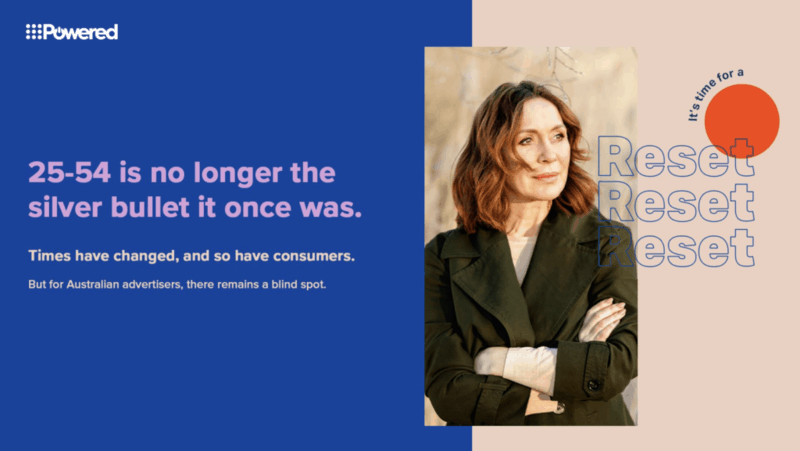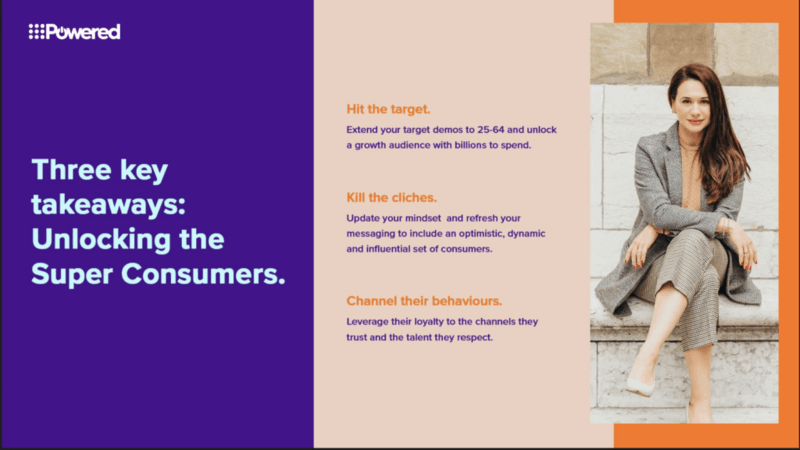The focus of many marketers and agencies on the 16-39 and 25-54-year-old consumer demographics means they are often missing Australians aged 55-64, new research shows. The research, conducted by Nine and Kantar, highlighted how adland’s focus solely on these demographics revealed a blind spot that meant brands, across a variety of sectors, were excluding influential and older “super consumers” with a high disposable income.

“There’s a blind spot in a lot of advertising and it’s a gap worth $2.3 billion in weekly household spending,” said Richard Hunwick, Nine’s director of sales – TV & Radio. “Our research paints a clear picture of how the 55-64s are the new power group of highly valuable super consumers.
“The problem is the conventional framework for targeting this group. It is outdated and leaves marketers missing out on extending their target market into a demographic which can actively drive growth in their brands.”
According to Nine’s research, marketers should be expanding their focus to include the 55-to-64 year-old demographic. By making this change they have the potential to tap into a demographic whose real household consumption outstrips the 25-34s and is also growing faster.
The research also noted that these “super consumers” have a higher net wealth and are very willing to spend on products and services that meet their needs.
“Our research has shown that too often this group are shown as being in a life stage of decline when life is actually on the up,” says Denise Hamblin, head of Sensory at Kantar. “They’re happier, more body-confident, more financially secure and less constrained by social expectations than younger groups, leaving them feeling ignored and stereotyped by media and advertising.
“There is an opportunity for advertisers to connect with them in a more aspirational light. To this end, we also know that inclusive advertising pays dividends – Kantar’s global advertising effectiveness work shows that including and portraying under-represented groups like the Super Consumers in a more positive and empathetic light can help with short-term sales lift and long-term brand growth among all consumers.”
However, advertising which targets a 55-64s demographic needs to be inclusive and have the effective planning, messaging and buying that ensures it speaks to and represents the “super consumer” demographic.

“There’s an opportunity to extend a brand’s target demographics to 25-64 and unlock a growth audience with billions to spend,” said Hunwick. “There’s a real growth to be had across multiple categories – food, alcohol, auto, tech, travel, luxury and fashion, to name just a few.
“But it needs a shift in approach to refresh the messaging and include an optimistic, dynamic and influential set of consumers who will no longer languish in the advertising blind spot.”
See the full whitepaper here.
